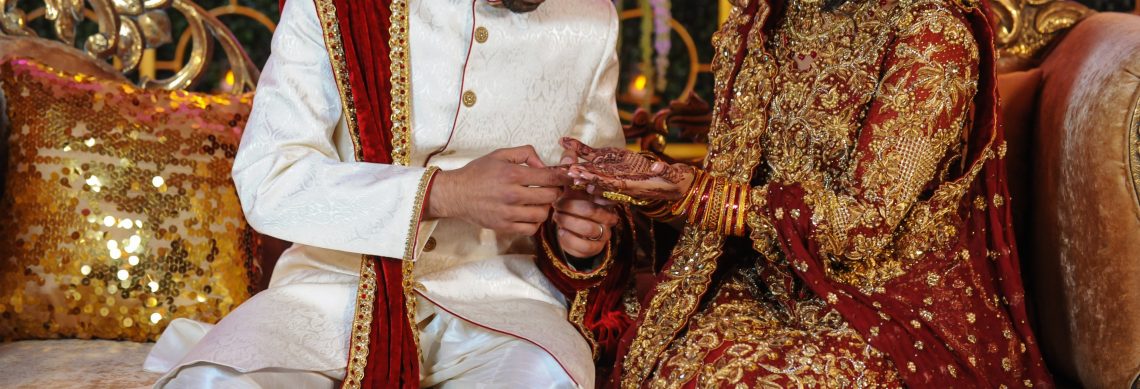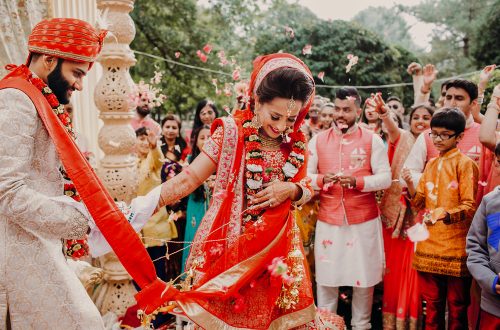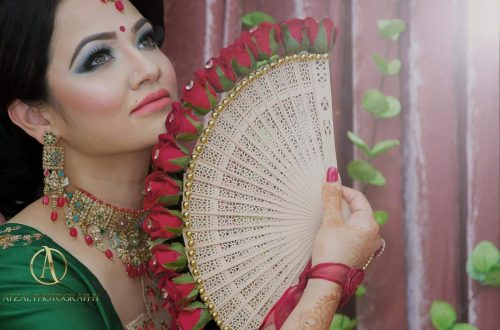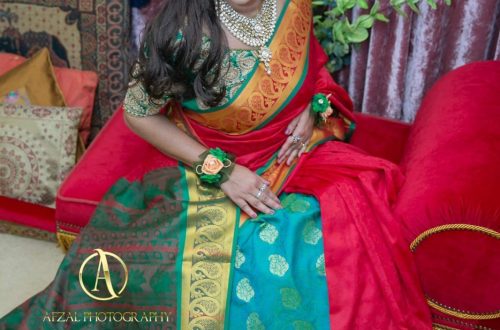A Traditional Muslim Wedding and its Significance
A Muslim wedding involves various pre-wedding, wedding and post-wedding rituals. Here are some of the traditions that Muslim weddings follow.
• Salatul Ishtikara – A pre-wedding ritual wherein the Imam prays for the blessing of Allah for the marriage. It’s basically an official announcement of the couple’s marriage.
• Imam Zamin – The mother of the groom visits the bride’s home and brings sweets and gifts as well as a silver or gold coin wrapped in a silk scarf and then tied around the bride’s wrist. This signifies the bride’s acceptance and formal welcome to her new family.
• Mangni – Both families give each other gifts. Mangni is the announcement of the couple’s engagement. The couple exchanges ring in front of their close friends and relatives.
• Manjha – This ritual occurs 2 days before the wedding. The couple wears yellow clothes in their own homes and gets smeared with a paste of sandalwood and turmeric in rosewater. Some celebrations follow. The bride and groom are then bathed in holy water. They’re not allowed to leave their homes before the wedding day.
• Mehendi – The bride’s female friends and the women of her family gather together. A relative or an expert in mehendi application draws the latest bridal mehendi designs on the feet and hands of the bride.
• Sanchaq – The groom’s male family members visit the family of the bride with gifts, including a bridal outfit with jewelry and accessories as well as sweets. This pre-wedding ritual signifies the support, affection, and blessing of the male members of the new home of the bride.
• Baraat – This is the most exciting part of the wedding day. The groom arrives at the wedding venue in a beautifully adorned car. He’s accompanied by his relatives and male friends. One of the bride’s family members escorts the groom.
• Welcome – The family of the bride receives the groom at the venue and serves with a cool drink in the company of the bride’s closest brother figure or brother. They spray rosewater or ittar around and on the groom to make a path for him to enter the wedding venue.
• Nikah – A Maulvi performs this primary wedding ritual. The women sit around the bride, and the men sit around the groom. The Maulvi recites prayers from the Quran. The bride’s Wali is her father. The family of the groom gives her Mer to get her consent. The most important part of the ritual is the Ijab-e-Qubool. The groom and bride are behind a hijab, which separates them from each other during the ritual. They have to say, Qubool Hai, three times when asked by the Maulvi to give their consent. The official marriage contract or the Nikah Nama is then recited in the presence of 2 witnesses each from the groom’s and bride’s families. After signing the official marriage contract, a Khutba is recited. Reciting of the marriage vows in the Quran follows. The elders the execute durud or blessing on the newlywed.
• Arsi Mushraf – The couple finally looks at each other through a mirror placed in between them.
• Rukhsat – The bride says goodbye to her family. This is the first post-wedding ritual at a Muslim wedding. When she arrives at her new home, she’s greeted warmly by her mother in law, and the Holy Quran is placed on her head to signify her obligations as a wife.
• Walimah – This is essentially the reception party and the public announcement that the marriage is completed. The newlywed is treated like royalty. There’s dancing, gifts, and food. The bride is introduced to the groom’s friends, relatives and members of his extended family.
• Chauthi – The newlywed visits the family of the bride on the 4th day after the wedding. The family of the bride greets the groom with many gifts and affection. This is the last post-wedding ritual.







